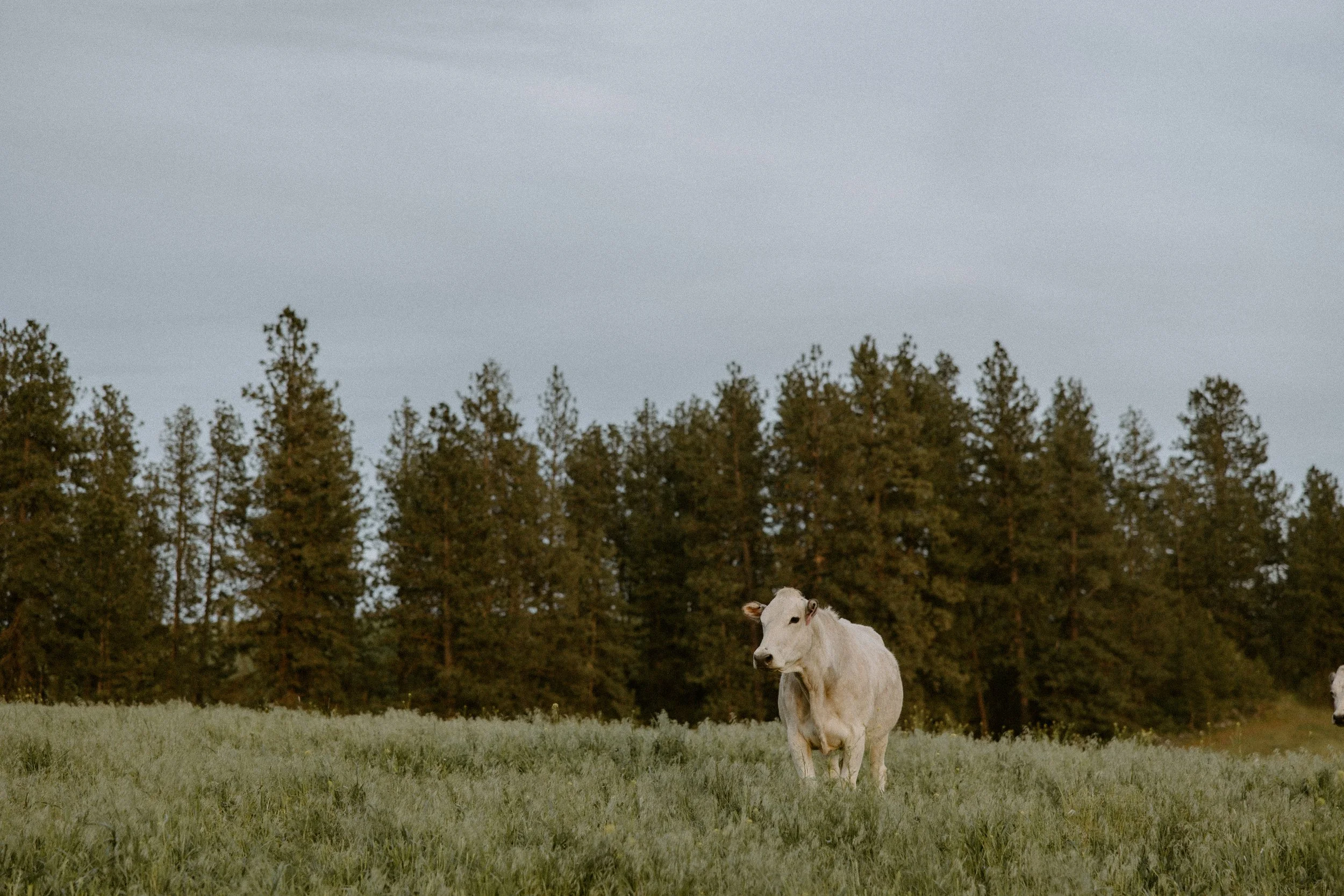the soil
On the ranch, Justin and Lauren converted their ground to no-till and low-till practices to minimize soil disturbance. This protects the network of beneficial microorganisms and increases the soil’s ability to hold water and nutrients over time.
They keep the soil covered with a continuous layer of vegetation, alfalfa interwoven with a mix of grasses. In the Inland Northwest, this living cover shields the ground from sun, frost, and heavy rain, guarding against erosion, preserving moisture, and creating habitat for the organisms that underpin a healthy pasture.
Alfalfa is integrated not only for its nutritional value to the cattle, but also for its agronomic role: fixing nitrogen, improving soil structure, and helping to suppress weeds. Their pastures are seeded with roughly seventy percent alfalfa and thirty percent grasses, including native species, orchard grass, fescues, brome, bluegrass, and red clover. The aim is quiet diversity, not monoculture.
rotational grazing
Livestock are woven into this system through seasonal rotational grazing.
In the Inland Northwest, the grazing season runs from April through October. During this time, the herd moves across approximately 1,000 acres—200 owned and 800 neighboring—grazing small stretches at a time. Justin and Lauren divide pastures into modest paddocks, move cattle as forage is taken down, and adjust fencing continuously. Each move is followed by deliberate rest, allowing plants to recover and roots to deepen.
This rhythm of movement is designed to echo natural grazing patterns and to enhance nutrient cycling rather than exhaust the land.
water & woodland stewardship
Stevens Creek, a small year-round stream, bisects the farm. It begins above the property at the base of the Rocks of Sharon and is fed by natural springs. Throughout the year, they maintain riparian buffers along the creek to prevent erosion and to foster a diverse ecosystem for native wildlife. Water is treated as part of the same system that ultimately shapes the integrity of the meat.
Their forested acreage is managed with a similar long view. In partnership with American Forest Management, Justin and Lauren undertook a “100-year” agroforestry and silvopasture project: identifying and removing diseased and dying trees, resting the land, and then replanting. In the process, roughly 2,000 compromised trees were removed and 2,500 new trees were planted. Species were chosen for hardiness and resistance to the fungi, insects, and diseases common to Inland Northwest ecosystems.
Already, they are seeing more volunteer seedlings than expected, a quiet sign that the remaining canopy and the new plantings are in balance.



